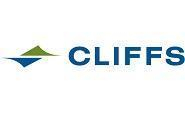Market Segment

July 16, 2021
Cliffs Aims to Slash CO2 Emissions by 25% by 2030
Written by Michael Cowden
Cleveland-Cliffs Inc. has joined the ranks of North American steel mills planning steep cuts to greenhouse gas emissions over the next 10 years.
The iron ore miner, pellet producer and flat-rolled steelmaker aims to cut greenhouse gas emissions by 25% by 2030 versus 2017 levels.
![]() The company said it would do so by using less energy and via carbon capture. It also plans to lever the advantages inherent in its North American footprint. That includes natural gas-based direct reduction from its DRI/HBI plant in Toledo, Ohio, and blast furnaces that use customized pellets instead of sinter as feedstock, Cliffs Chairman, President and CEO Lourenco Goncalves said in a statement.
The company said it would do so by using less energy and via carbon capture. It also plans to lever the advantages inherent in its North American footprint. That includes natural gas-based direct reduction from its DRI/HBI plant in Toledo, Ohio, and blast furnaces that use customized pellets instead of sinter as feedstock, Cliffs Chairman, President and CEO Lourenco Goncalves said in a statement.
“And, last but not least, electric arc furnaces (EAFs) free from the vast amounts of dirty pig iron originating from highly polluting countries, so common in other EAF operations in the United States,” Goncalves added.
With prime scrap in demand, EAF steelmakers increasingly rely on scrap alternatives such as pig iron. And major foreign sources of pig iron – such as Russia, Ukraine and Brazil – have fewer pollution controls than the U.S.
Cliffs is known primarily as an integrated steelmaker. But it also operates EAFs at its stainless mill in Mansfield, Ohio; its stainless and carbon steel mill in Butler, Pa.; its plate mill in Coatesville, Pa.; and its rail mill in Steelton, Pa.
The company also stressed that its environmental responsibilities dovetail with its obligations to the communities in which it operates. “We mine iron ore where our employees live, and we produce steel in close proximity to big cities,” Goncalves said. “Our ability to attract new employees and even our license to continue to exist are fully correlated to our success in being a good neighbor.”
Cliffs operates big integrated steelmaking operations in Cleveland; in Dearborn, Mich.; in northwest Indiana, just outside of Chicago; and in Middletown, Ohio, not far from Cincinnati.
The company is the largest flat-rolled steelmaker in North America.
U.S. Steel, its primary competitor in the integrated arena, is also looking to curb emissions. U.S. Steel is studying the possibility of deploying carbon capture and storage as well as hydrogen-based steelmaking at its Mon Valley Works in western Pennsylvania – an effort that could involve neighboring Ohio and West Virginia as well.
By Michael Cowden, Michael@SteelMarketUpdate.com







